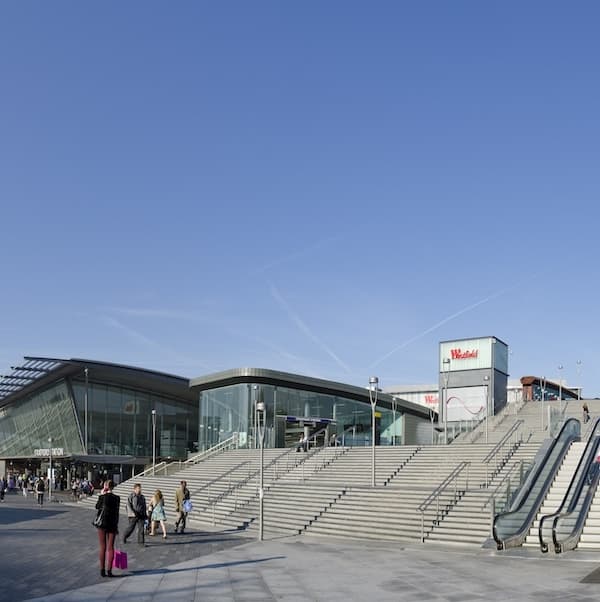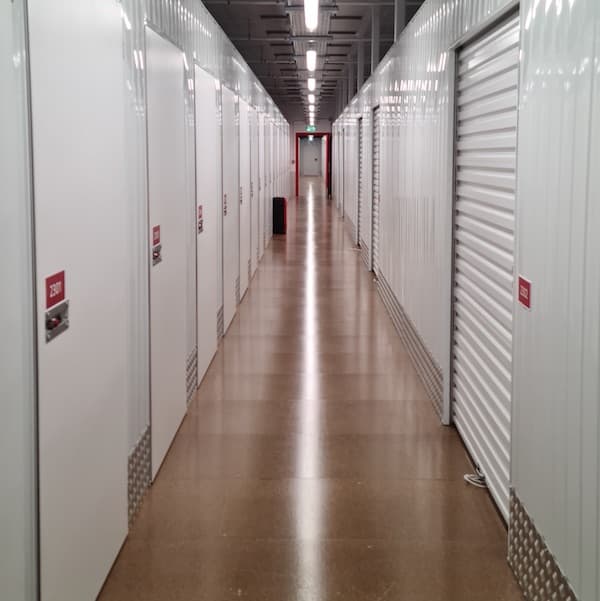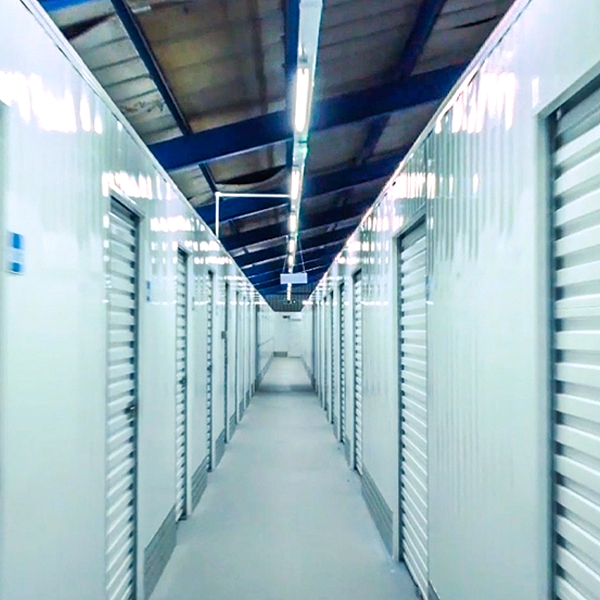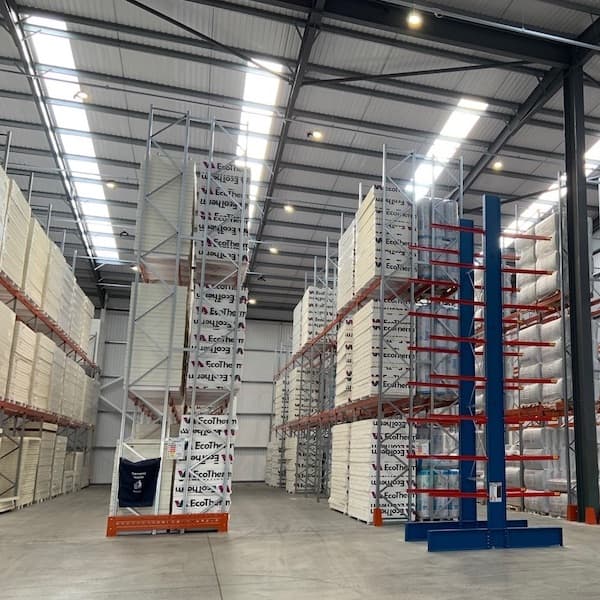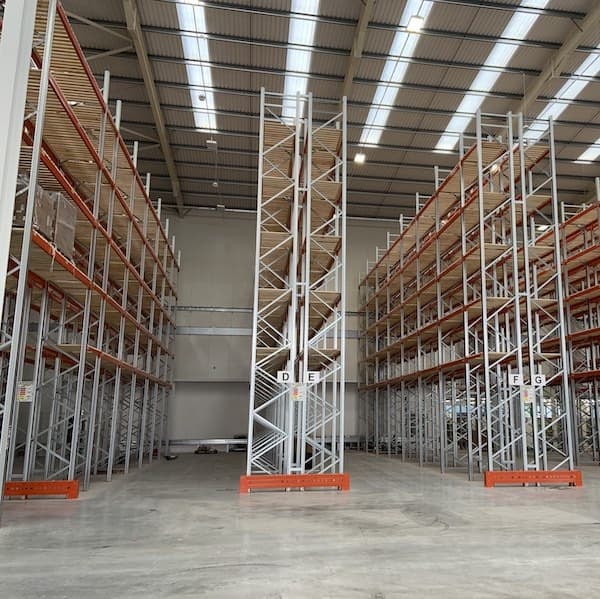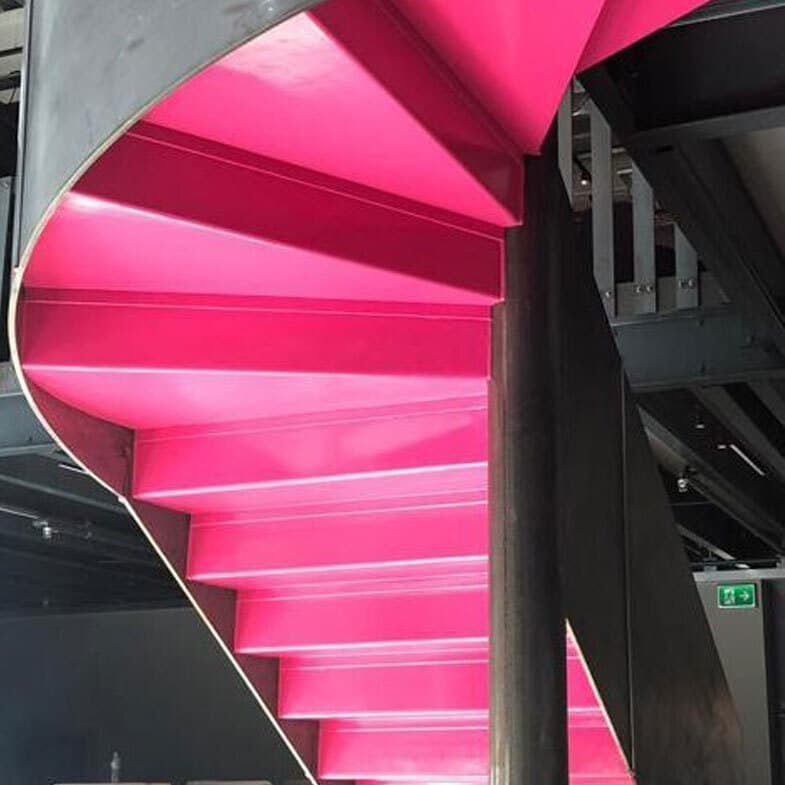- Mezzanine Floors
- Solutions
- Multi-Tier Mezzanines
- Mezzanine Pallet Safety Gates
- Mezzanine Staircases
- Mezzanine Handrails and Balustrades
- Mezzanine Decking
- Fire Protection for Mezzanine Floors
- Mezzanine Lift Shaft Design and Installation
- Resources
- Mezzanine Floor Calculator
- Mezzanine Floor Regulations and Building Control
- Self-Storage Mezzanine Floors
- Self-Storage Units
- Resources
- Self-Storage Site Selection Information
- Calculating The ROI of Self-Storage Conversions
- Planning for Automation in Self Storage
- Racking & Shelving
- Solutions
- Cantilever Racking
- Pallet Racking
- Coil Racking
- Longspan Shelving
- Tyre Racking
- Kimer Racking
- Live Storage Racking
- Drive In & Drive Through Racking
- Clip Shelving
- Mobile Shelving
- Custom Fabrications
- About Us
- USS Case Studies
- Self-Storage Fit-out For Raked Ceiling Building
- Mezzanine And Staircases For Entertainment Venue
- New Mezzanine And Staircases For Major Retailer
- Mezzanine Pallet Safety Gate
- Self-Storage Fit-Out Project For Brand New Facility
- Warehouse Racking, Wire Mesh & Shelving for New Warehouse
- Self-Storage Partition System & Components Installation
- Self-Storage Store Mezzanine And Staircases
- Multi-Tier Mezzanine For Logistics & Distribution Facility
- Warehouse Plant Platform
- Self-Storage Facility Space Expansion
- Mezzanine Floor For Distribution Warehouse
- Bespoke Feature Staircase & Mezzanine
- Single Level, Multi-Use Mezzanine
- Mezzanine For A New Building
- Mezzanine Floor For Plumbing Supplies Warehouse
- New Racking System and Mezzanine Floor
- Car Park Conversion To Self Storage Facility
- Pallet Racking and Cantilever Racking For Warehouse
- Two Mezzanine Floors For Self-Storage Facility In Birmingham
- Our Accreditations
- Contact Us
- USS Case Studies
The Latest Blogs From USS
Getting Your Storage Mix - or Storage Remix - Right
read
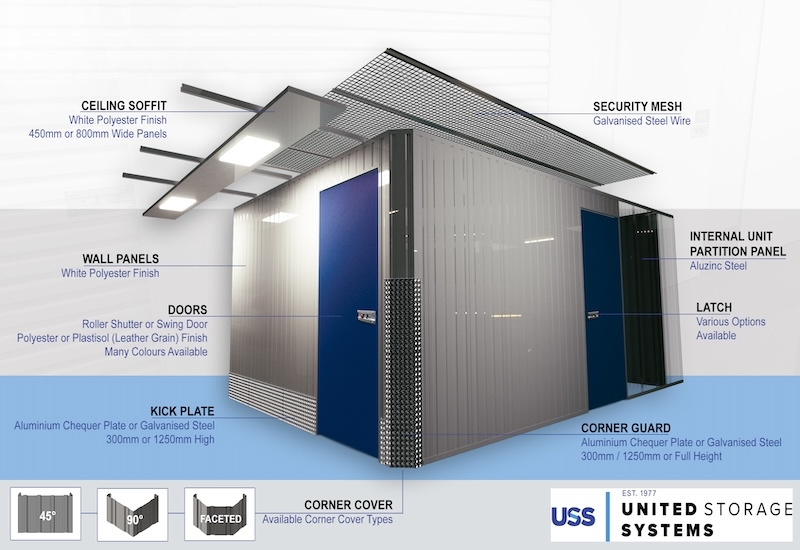
If you’re new to the self-storage industry, one of the key questions you’ll have to answer is exactly how many storage units you will install in your facility and what the mix of sizes will be. Up to a point, the maximum number of units will be dictated by the facility’s overall size, whether it’s a new build or the kind of conversion project we’re used to dealing with. The initial calculation may seem relatively simple – the square foot of space available divided by the square feet taken up by the average storage unit to arrive at a number of units. Once you’ve calculated this figure, the temptation may be to cram in as many units as possible, the logic being that the more units you can rent out, the more rental income you’ll be able to bring in. The huge caveat to attach to this approach is that the smallest storage units you can install in your facility are a little larger than a telephone box (anyone under 30 should now ask an elderly relative precisely what a telephone box is). This space might be suited to storing the books and paperwork you haven’t got space for when you clear out a spare room, but it isn’t much use if a prospective customer is between house moves and needs to store the contents of several rooms safely.
What Do The Figures Say?
The UK Self Storage Industry Report 2023 looks at all aspects of the self-storage industry from the point of view of operators and customers, and the data it contains is a good starting point for choosing the mix of unit sizes in your storage facility. For example, the average age of self-storage customers is more likely to be somewhere between 40 and 70, with the majority being between 55 and 64. In some respects, this is relatively easy to understand – the longer you live, the more possessions you amass and, therefore, the more likely you need space to store those possessions. Allied to this is the fact the drivers of self-storage rental – and this is something which never changes despite other shifts in the industry or the wider economic outlook – are usually life events such as divorce (or the end of a long-term relationship), death in the family or moving home, and these are likely to impact on more people as they get older.

The takeaway from statistics like these – allied to the fact that self-storage customers tend to skew toward the more affluent end of the spectrum where income is concerned – is that the average customer is likely to want a unit which is larger than the smallest units available and at least large enough to store items of furniture. According to the Industry Report, the most popular unit size is between 11 and 50 square feet, which is the choice of 35% of all customers (combining business and domestic customers). The second most popular is 51 to 100 square feet, which scores 25%, followed by 101 to 200 square feet, which is the choice of 12.5% of customers. Interestingly, the figures for business and domestic use are closely matched regarding the size of units preferred, with the main difference being that business customers are more likely to use multiple units.
These figures are averages taken from a study that garnered the views of hundreds of customers nationwide. However, they still demonstrate that what customers are looking for is a range of unit sizes, making it possible to rent a single unit to meet their needs at any given time and – in the case of a growing business, for example – additional units if and when circumstances change. As a self-storage provider, you must create a mix of unit sizes designed to serve the general self-storage customer community. Still, you’re more likely to achieve maximum success if you tweak your offering to tailor to your particular location’s demographic. According to the Industry Report, approximately 62% of customers travel less than 15 minutes to access their self-storage unit, underlining that self-storage functions as a highly convenient alternative to storage at home. What this means is that the majority of your customers – and only 13% travel for more than 31 minutes – will live within a 15-minute radius of your facility, and this makes it possible to mark out, on a map, the area which you need to research to determine who your customers are likely to be and therefore what mix of storage they are likely to be looking for.
Do Your Research
Before embarking on more in-depth research, you could start with the simple expedient of looking into any self-storage facilities already operating in the locality. Take a look at the number, type and mix of units they offer – this information could act as either a guide to the mix you opt to install in your own facility or a pointer to a gap in the market. Suppose your facility is based in an area with a high student population, for example. In that case, it might pay to install a few more of the smallest and least expensive units, as students may find themselves with too much stuff to fit into their relatively cramped student accommodation, particularly by the second or third year of study.

As with all such decisions, it’s a question of balance – students will probably only be able to afford the least expensive and smallest storage units and are likely to empty their units to save money throughout the year when they take stuff back home to dump in their old bedroom. The rental income, therefore, will be lower and slightly sporadic on units of this type, so it’s important not to skew the balance too far in this direction.
Or Get the Experts In
When it comes to gaining more granular insight into the broader demographics of your location, it may well pay to utilise the services of a professional polling organisation, which is likely to have the information you need – age, income, home ownership figures, etc. – at their fingertips. This service represents an additional expense at a time when you’re doubtless ploughing plenty of money into establishing your facility, admittedly. Still, if you look upon it as an investment enabling you to hone the balance and make-up of your units, it soon starts to look like money well spent. Some locations, for example, may be packed with SMEs still operating out of their home as start-ups or early-stage businesses. SMEs like these often struggle with working from home as the business grows, and affordable, flexible storage space could be what they are looking for.
In many cases, the requirement will be for a storage unit to store stock, but some SMEs may also be looking for a smaller storage unit to utilise as a base for retail operations. Another metric to look out for is the size of the properties rented out around your storage facility. In many city centres or densely populated suburbs, for example, people are finding themselves only able to afford to rent accommodation much smaller than they need, even if only temporarily while they save enough to move somewhere larger. Customers like this will be looking for storage units large enough to store furniture items such as beds, wardrobes and sofas. You should offer these alongside the smaller units for miscellaneous items.
Already in the Business? You Could Be Looking at a Remix
Once your facility is up and running, the mix of units needs to be monitored regularly and compared to the demand experienced and actual rental statistics.
You might not get it entirely right the first time, or shifts in the area’s demographics or the wider economic outlook could lead to the demand for units altering slightly. The good news is that working with the team at USS makes it simpler than it’s ever been to ‘remix’ the self storage units in your facility via a turnkey solution which balances our engineering expertise with our knowledge of the industry. And involves an analysis of your customer data, to deliver a revised unit mix which maximises the space available while being tailored to a specific location.
This blog is for information purposes only and should not be construed as legal or financial advice and not intended to be substituted as legal or financial advice.
Find Us
S & L United Storage Systems Ltd
United House, The Street
Takeley, Bishop's Stortford
Hertfordshire, CM22 6QR
Company No. 1313816
VAT No. 291616253Say Hello
01279 871 787Copyright © 2025 S & L United Storage Systems Ltd. All rights reserved.
- About Us

